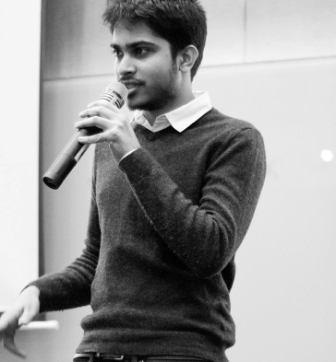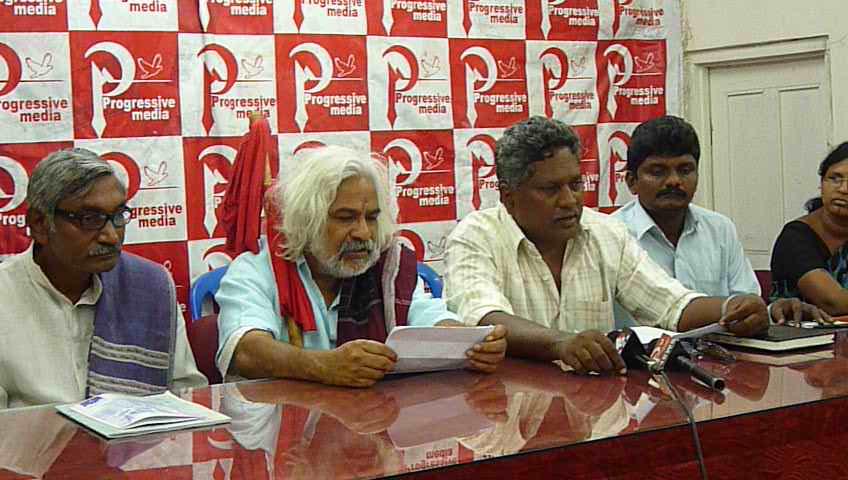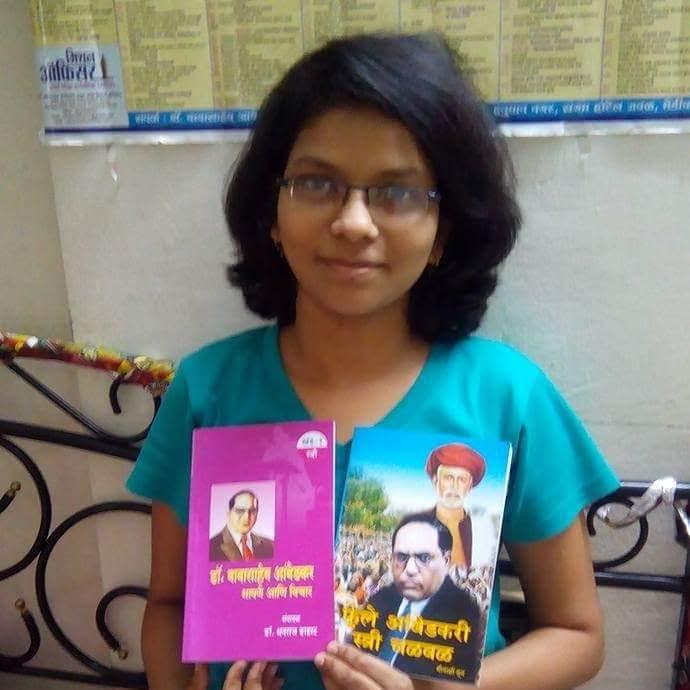Pranav Kuttaiah
 “[Caste] is a local problem, but one capable of much wider mischief, for as long as caste in India does exist, Hindus will hardly intermarry or have any social intercourse with outsiders; and if Hindus migrate to other regions on earth, Indian caste would become a world problem.”1 ~Dr. B. R. Ambedkar
“[Caste] is a local problem, but one capable of much wider mischief, for as long as caste in India does exist, Hindus will hardly intermarry or have any social intercourse with outsiders; and if Hindus migrate to other regions on earth, Indian caste would become a world problem.”1 ~Dr. B. R. Ambedkar
“Since when do Indians eat meat?” asked a Mexican student slightly incredulously, eyeing the excessive amount of beef I had helped myself to at the University cafeteria. It came as a slight surprise to me – my own family seldom had a meal that didn’t include pork or beef at the table. “Aren’t most Indians vegetarians?” she continued.
I could’ve instinctively thrown the statistics I’ve been hardwired to remember to correct the casteist presumptions one faces in debating most Indians who speak English: Only about 31% of Indians are vegetarians, a figure that falls to 21% for families with all vegetarian members. Most southern states have a sub-10% number of vegetarians, and perhaps more notably the number of vegetarians is 55% among Brahmins and only about 12% among Adivasis.
But the perception was what intrigued me more. A young Mexican student in Paris’ instinctual belief was that India was a vegetarian country. I decided to probe further.
“What else do you know about India?” I asked.
“I’m sorry, just the stereotypes – Yoga and meditation, Hinduism… and I thought you guys were vegetarian”
I couldn’t argue with that – those are Indian stereotypes by the parameters of most Western English-language programming. But the more interesting question for me was why these are stereotypes when they are alien customs to almost all of India’s myriad linguistic and ethnic groups. From people asking me if I practiced yoga to the words ‘religious’, ‘pious’, ‘devout’ and ‘mystical’ being used to describe India in a class aimed at expanding our French vocabulary – the notion of a Brahmanic culture is dominant about a nation that has a minuscule percentage of Brahmins to the rest of its population.
Perhaps the reasons for this don’t come as much of a surprise. I used to reside in a housing facility in Paris that is owned by and associated to the Government of India. Upon entering, the first thing one notices is a gleaming statue of Vivekananda, a founding father in many ways of Hindutva nationalism. In the west, this sort of depiction serves the purpose of linking ‘Indian’ culture with Brahmanic male culture. After all, these are Vivekananda’s own words on some issues:
“It is in the nature of society to form itself into groups… caste is a natural order; I can perform one duty in social life, and you another; you can govern a country, and I can mend a pair of old shoes, but that is no reason why you are greater than I, for can you mend my shoes… Caste is good. That is the only natural way of solving life.“2
One would imagine that an institution that claims to embody the kaleidoscope of Indian society should have a more representative figure adorning its walls. But to turn it around, it’s also useful to consider that the statue remains despite generation after generation of Indian students, researchers and dignitaries – not simply the elite but the educated elite – passing by it; perhaps a comment on the caste composition of Indians with the agency to make it to Paris. Even the choice of festivals celebrated by the house – Diwali, Holi and Durga Puja – is telling as to what the ‘Indian’ management perceive as celebrations of ‘Indian’ culture.
On one such occasion, the anniversary celebration of Vivekananda’s trip to Chicago, a glimpse was provided as to what exactly India is to the foreign eye. The chief guest for the occasion was, unsurprisingly, a Swami from the Paris branch of the Ramakrishna Mission. A few dignitaries and foreign servants graced the occasion and trotted out the usual dialogues that serve as balm to the colonized mind: “We have had the greatest civilization”, “No other country or civilization can boast of the minds we have produced”, “Our people control the world economy today” etc. More bizarre, however, was what followed: A group of French men and women put up a performance of songs, dance and chanting; a sort of intoxicated Shaivite celebration which sought to explore Vivekananda as an ‘aspect of Shiva’. I had often wondered when talking to Indians who were climate-change deniers or anti-abortion crusaders why they had chosen to import the source of their irrationality; but it was quite pleasing to note that we too had a played a role in globalizing superstitions.
It is a matter of fact that I did not go to Paris expecting (or even wanting) my personal festivals to be celebrated or given credence, but the degree to which an othering of non-upper caste communities happens in such confines is baffling. For the purpose of brevity it is best to focus simply on icons and physical traces, the most obvious and blatant reflections of the scenario. Although Gandhi smiles down from his pedestal inside the building (far from the reaches of the dalit-bahujan democratic movements that put Ambedkar next to him on the wall of every government institution in my home town) the choice of Vivekananda as the representative figure is intriguing. The politics of such institutions could just as easily use a statue of Golwalkar to represent their true politics – but Vivekananda is the strategic choice for a very specific reason: his supposedly anti-colonial stance. In later months I would realize this – most of the upper-castes in these locations perceived themselves as some sort of warriors against the colonial machine.
In honesty, an anti-colonial stance is a valid politics to practice considering the alienation one feels at the hands of a white society. But who could legitimately claim to represent such a stance in the Indian context but for the Dalit-Bahujan-Adivasis? You certainly wouldn’t gather that from the majority of Indian students who stay in those spaces – for them caste is almost a colonial conspiracy to hold back the glory of an ancient Indian nation. One could perhaps shrug it off as laughable if it was restricted to a few disgruntled engineers, but it clearly remains a theme that is popular among the academic intelligentsia of certain castes. The upper-castes – left, right and centre – get behind the passionate claims for reparations made by Shashi Tharoor. They will attempt to educate apologists that the railway projects in India were specifically designed to enrich the British because when a railway made a loss, the Indian taxpayer footed the bill ensuring British ‘investors’ couldn’t lose. True as that might be, it is funny how they forget to mention which group of ‘Indians’ had to lay those railway tracks, maintain them and bear all the actual load of the problem. Unpacking the complicated category of ‘Indian’ is not something they are interested in as it gives them something to hide behind. This student population, who often go on to become permanent NRIs, specialize in self-victimhood. They will, with no sense of irony, mourn how they were “forced” to leave the country for educational opportunities because of policies like reservation; “forced” against their will to have to go live in Paris or London. They may go on to adopt any and every ideological shade from Trump to Hillary and Cameron to Corbyn – but the chest-thumping nationalism of the India narrative remains the crux of their politics. The question of colonialism becomes a convenient option to explore – and even the likes of Tharoor are forced to stumble when asked what then would be their stance if an occupied Kashmir were to ask the same of the Indian state a few years hence.
This entire narrative of course puts the Dalit-Bahujan-Adivasi in a precarious space. The importance of missionaries in the education of Mahatma Phule and Babasaheb Ambedkar, the “western” rationalism of Periyar and even the importance of English as a tool to reduce caste hegemony are all well-explored themes in academia and media. Notwithstanding the relevance of this narrative, it serves to push the idea of Dalit-Bahujan-Adivasi emancipation as somehow linked to colonialism – with the “true” freedom fighters and “decolonizers” thus being reduced to a spectrum from Gandhi to Vivekananda. Vivekananda himself articulates this quite clearly:
“…And the Europeans are now educating those ignorant, illiterate low caste people, who toil fields in their loin cloth, are of the non-Aryan race. They are none of us. This is going to weaken us and give benefit to both these Europeans and the low caste people“3
The upper-caste thus emerges as the progressive voice of decolonization, forcing the Dalit-Bahujan-Adivasi into a defense of the merits of colonial plunder. The thin group of oppressed castes that have attained relative class privilege are forced to acknowledge their compliance and collaboration with colonialism and capitalism; while the huge layer of savarnas who historically and even today form a small minority of the working class – be they left-wing or right-wing – posit themselves as the true anti-colonial voice.
This narrative stands brazenly in the face of a mountain of historical evidence. Both British and French colonialism were fought fiercely in south India starting from the time they landed – the siege of Arcot in 1751, the battle of Bobbili in 1757 in Vizianagaram district of northern Andhra Pradesh as well as the Polygar Wars and the emergence of leaders like Veerapandiya Kattabomman in Tamil Nadu in the late-1700s. There was also massive resistance in the form of the anglo-Mysore wars starting from 1792. As always, the tendency to discount the role of women in fighting European colonialism is used to sidestep the role of feminist revolutionary fighters like (in the case of my home state of Karnataka) Rani Abbakka Chowta who fought the Portuguese as early as the 16th century and Rani Chenamma of Kittur who led an armed rebellion against the British East India Company in 1824. In the north of India too – the Adivasis formed the backbone of the opposition to colonialism, from the Santhal rebellion to the Halba revolt, from the Konds and Lushai tribes to the great struggle under the leadership of Birsa Munda.
Even the few tribes and oppressed castes that fought for the British did so out of the abject conditions they were left in by the caste system – and even today, by and large, their social positions remain inferior to that of the upper castes of the same region. The colonial experience may have brought about a slight mobility for some members of these communities – but at the cost of huge numbers that were sacrificed in fighting all British wars from within the subcontinent right up to the two World Wars. On the whole it is clear – colonialism has exacerbated and institutionalized the destruction of Dalit-Bahujan-Adivasi lives across the false pre and post-colonial divide. The colonial process, its main beneficiaries and their legatees have all thrived on this caste-based exploitation.
By what stroke of tragic irony then, did Gandhi become the main Indian contribution to anti-colonialism and civil rights? How does Vivekananda continue to be invoked in Paris as an anti-colonial radical? It’s simply through the same process that Tilak and Savarkar came to be canonized as ‘freedom fighters’ and not reactionary upper-castes – through the patronage of the Indian state and its cultural and educational wings. This has come at great burden to the Dalit-Bahujan-Adivasi – she is left clinging to this colonial burden which has kept her stories insulated from a remarkable universe of anti-colonial resistance. The brahminical nature of the state and those who posit themselves as representatives of ‘Indian’ culture abroad ensures that India comes across as a unified land with a cozy relationship to colonialism.
When – as happened recently – a statue of Gandhi is removed from a university in Ghana,4 it is a victory not simply for the African people but also for the Dalit-Bahujan-Adivasis. The only thing that needs to be made is the connection – the identification that there is a mutual liberation in doing away with the “Uncle Toms” presented to us as anti-colonial icons. It is a major blow to the upper-caste and white PR exercise telling the oppressed how they ought to remember their own plunder. The cooption of Martin Luther King Jr. by the United States as merely a civil rights figure – ignoring his radical anti-imperialism and opposition to the Vietnam War – made him (and therefore also the issue of racial violence) some sort of ‘internal issue’ in the USA. Malcolm X, with his pan-Africanist ideal and willingness to call out the United States’ racism internationally was less susceptible to co-option and was thus sought to be erased.5
The Dalit-Bahujan-Adivasi movements stand at such a crossroads today – with the Indian state’s international actors and institutions trying to talk of caste as an ‘internal problem’, as the freedom struggle as a “pan-Indian” process etc. It’s about time that the movements of the oppressed in India against both caste and colonial oppression take their rightful place in the global pantheon of anti-colonial resistance. Birsa Munda, Ambedkar, Periyar, Savitribai and Jyotiba Phule are global icons of justice, peace and self-respect that must be connected directly to the revolutionary struggles of indigenous and oppressed peoples across the world – taking the place of the casteists, sexists, racists and colonial-stooges promoted by the Indian government and upper-castes as ‘revolutionary’. The most serious challenges to the colonial machine in India came from the oppressed – and therefore it’s worth reminding the NRI revolutionaries that the only true and legitimate discourse of decolonization will also emerge only from the oppressed.
Notes:
1. Ambedkar, B. R. (1917). Castes in India: Their Genesis, Mechanism and Development.
2. Vivekananda, Swami, The Complete Works of Swami Vivekananda, Vol. III (Calcutta: Advaita Ashrama, 1989-92). Pg. 245-6
3. Cited in Mani, B.R. (2005), Debrahmanizing History. Manohar – New Delhi
4. https://www.theguardian.com/world/2016/oct/06/ghana-academics-petition-removal-mahatma-gandhi-statue-african-heroes
5.Daulatzai S (2012). Black Star, Crescent Moon: the Muslim International and Black Freedom beyond America. Minneapolis: University of Minnesota Press.
~~~
Pranav Kuttaiah has studied at St. Xavier’s College (Mumbai) and Sciences Po (Paris). He is currently a fellow at the Indian Institute for Human Settlements in Bangalore.










